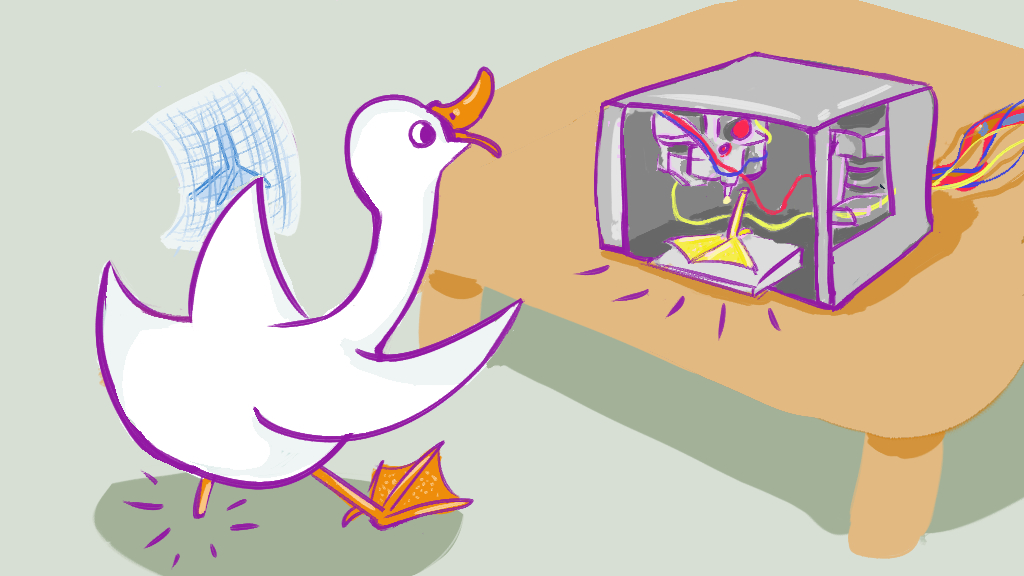A Closer Look at RIT's 3D Printing Services
by Michel Corey | published Sep. 25th, 2015
While RIT has had 3D printers on campus for quite some time now, the technology is still unfamiliar to many people. Locating a machine on campus may not be that difficult, but actually wrapping your head around one of them and figuring out what you can use it for are entirely different tasks.
Let's try to unpack this daunting yet endlessly promising new technology.
3D printing, or additive manufacturing, is the creation of a three dimensional object by adding layer after later of material. This technology is by no means new, believe it or not. The manufacturing industry has been using this technology for the past 20 years -- longer than most RIT students have been alive -- but the reason the field has garnered so much attention recently is because of the drastically decreasing costs of the printers themselves. This makes them more attainable and subsequently increases their popularity.
So how exactly do you print something in 3D?
Before the process can start, a virtual design of the object needs to be created and the resulting "blueprint" must be stored in a computer-aided design (CAD) file. In cases where the object is being created from scratch, 3D modeling software is used. However, if the object being created is a copy of an already existing 3D object, a 3D scanner produces the required CAD file and duplicates what is necessary for it to be recreated. If the object being produced is common enough, there may already be a CAD file on the internet prepped and ready to go for anyone's use.
The human element of the printing process ends when this step is completed. Once the CAD file is ready, you can allow yourself to take a step back and watch in amazement as the software and hardware work their magic. The software's job is to divide the object into thousands of horizontal layers, assembling the object layer by layer until its completion. You also have a wide variety of materials to choose from, ranging from plastics, wax and glass to precious metals like gold and silver.
What can you do with a 3D printer anyway?
3D printers have a veritable multiverse of uses. Some of these include the ability to print a working acoustic guitar, prosthetics, tools, machine parts, camera lenses and even food, in some cases.
RIT has two 3D printers on campus already, although not for general use, but RIT will soon offer a state-of-the-art 3D printing lab with help from Empire State Development, New York state's economic development agency. This lab will be in The Additive Manufacturing and Multifunctional Printing (AMPrint) Center, headed by Professor Denis Cormier, and will draw participation from multiple university and corporate partners. RIT was selected from a long list of applicants and the new center will be eligible to receive $921,000 each year for up to 10 years, if it passes performance evaluations. Participants in the venture include Clarkson University and State University of New York at New Paltz, as well as Xerox, GE Research, Corning, Eastman Kodak and MakerBot.
While the wide world of 3D printing can be intimidating, it's nearly boundless uses and inviting sense of discovery truly provide something for everyone.



